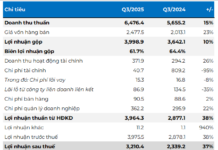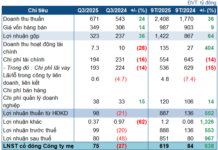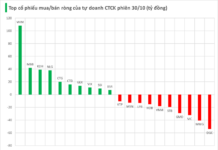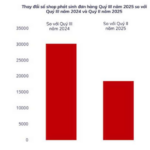The Rise of Imported Cars in Vietnam: A Shift in the Automotive Industry
According to a report by the Vietnam Automobile Manufacturers’ Association, in July 2024, member companies sold 13,788 domestically produced and assembled cars and 15,132 completely built-up imported cars. In the previous month, domestic and imported car sales were 12,962 and 13,613 units, respectively. This trend was similar in April and May, with imported car sales consistently outpacing domestically produced cars by 1,000-2,000 units.
Reversal of Fortune
Notably, data from the General Statistics Office showed that in the first seven months of this year, the output of domestically produced and assembled cars reached only 172,200 units, a decrease of about 20,000 units compared to the same period last year and a significant drop of 80,000 units from 2022. Despite the low production, there is also a significant inventory of 20,000 unsold vehicles.
This is an unusual development in the automotive market, as previously, domestic car sales typically outperformed imported ones due to their price advantage and accompanying preferential policies. Now, the competitive edge is shifting towards foreign car brands.

The surge in official imported cars this year threatens the market share of domestic cars.
Mr. Hoang Minh Tan, a car dealer in Ho Chi Minh City, shared that imported cars from nearby markets like Thailand and Indonesia, which used to have an average price of 400-500 million VND per unit, have now dropped to 350-450 million VND. Apart from their affordability, the quality of imported cars is also a crucial factor influencing consumers’ purchasing decisions.
According to the observations of the Nguoi Lao Dong reporter, not only manufacturers but also importers are offering significant price reductions on various car models at this time. For instance, all imported MG models have been discounted by 60-170 million VND per unit, depending on the model, resulting in a notable increase in sales.
Similarly, the Xforce model by Mitsubishi witnessed a doubling of its sales in July 2024 compared to the previous month due to a price reduction of 20-40 million VND per unit and a cash support amount equivalent to 100% of the registration fee. With 1,748 units sold, Xforce emerged as the top-selling model in July.
Other brands, including Toyota, Subaru, Volkswagen, Mitsubishi, and Suzuki, have also implemented policies offering support equivalent to 50%-100% of the registration fee for imported models. Mr. Pham Quang Thang, Sales Director of Hanoi Automobile Joint Stock Company, acknowledged that in the context of the preferential registration fee policy for domestic cars being temporarily suspended for several months, the proactive strategy of importers has significantly boosted sales in this segment since the beginning of the year.
The Appeal of Importing Over Manufacturing
The goal of developing Vietnam’s domestic automotive industry continues to face challenges as car companies recognize the greater benefits of importing completely built-up units instead of manufacturing, especially with the decreasing trend in car prices.
Mr. Trieu Khac Thiep, Director of Cho Tot Xe, revealed that many car brands are adopting a strategic shift towards importing rather than domestic production and assembly if their imported models demonstrate strong sales performance, thereby altering the sales ratio between domestic and imported cars. In reality, numerous models imported from Indonesia and Thailand enjoy a competitive edge due to these countries’ large-scale production, catering not only to their domestic markets but also to exports.
Benefiting from their large-scale production, these countries boast significantly lower production costs compared to Vietnam. “All car companies must make calculated choices to maximize their gains, and this shift towards importing is becoming a prominent trend,” remarked Mr. Thiep.
A representative of Toyota Vietnam confirmed that nearly 20 of their models, which were previously mainly assembled domestically, have recently transitioned to imports to take advantage of the preferential 0% import tax rate.
Additionally, the company carefully considers its investment decisions regarding vehicle production and assembly in each market to ensure efficiency. For instance, in Vietnam, they focus on four models: Vios, Veloz, Fortuner with a diesel engine, and Innova with a floor-shift transmission. Similarly, Mitsubishi, a brand that previously had a large proportion of domestically assembled models, now only maintains two locally assembled models: Xpander with a floor-shift transmission and Outlander.
According to Mr. Dao Cong Quyet, a representative of the Vietnam Automobile Manufacturers’ Association, the cost of producing cars in Vietnam is 20% higher than in other Southeast Asian countries, posing a significant barrier to increasing domestic assembly output.
Forecasts indicate that the number of completely built-up cars imported from Indonesia and Thailand will continue to rise in the coming period. Chinese businesses are aggressively investing in these two manufacturing hubs to boost exports of affordable cars to Southeast Asian countries, including Vietnam.
Meanwhile, the domestic automotive industry is expected to produce and assemble 340,000 vehicles this year, unchanged from last year and a decrease of 100,000 units compared to 2022. With a decline in production output as some enterprises shift towards importing, Vietnam’s automotive industry faces competition from foreign brands in its own backyard.
The Ultimate Showdown: Lynk & Co 06 vs. Seltos, Xforce, and Yaris Cross – Which Subcompact SUV Reigns Supreme?
The Lynk & Co 06 is making waves in the B-segment SUV market, boasting superior specifications that set it apart from its competitors. With an advanced multi-link suspension system, the most powerful engine in its class, and an impressive ADAS package featuring 17 functions, the 06 offers a compelling proposition to customers. However, established players such as the Mitsubishi Xforce, Kia Seltos, and Toyota Yaris Cross continue to dominate the sales charts and enjoy a strong reputation in the market.
Toyota Vios Prices Plunge to a Shocking VND 400 Million, Rivaling A-Segment Vehicles
After deducting a series of promotions, the real price of Toyota Vios is only about 450 million VND for the lowest version, which is equivalent to many Class A car models.







































